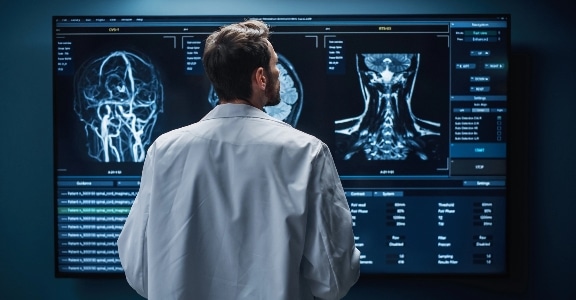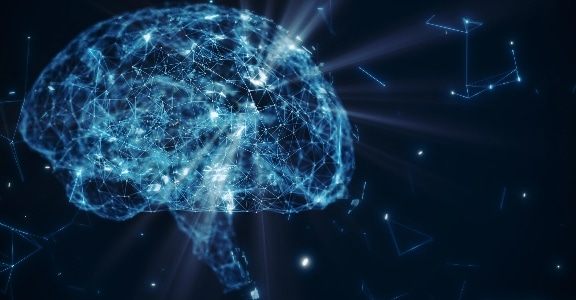Percutaneous Auricular Vagus Nerve Stimulation Reduces Inflammation in Critical Covid-19 Patients
Original Research article
Front. Physiol., 04 July 2022 Sec. Autonomic Neuroscience
Tamara Seitz¹*, József Constantin Szeles², Reinhard Kitzberger¹, Johannes Holbik¹, Alexander Grieb¹, Hermann Wolf³,⁴, Hüseyin Akyaman³, Felix Lucny², Alexander Tychera², Stephanie Neuhold¹, Alexander Zoufaly¹,⁴, Christoph Wenisch¹ and Eugenijus Kaniusas⁵
¹Department of Infectious Diseases and Tropical Medicine, Klinik Favoriten, Vienna, Austria
²Department of General Surgery, Division of Vascular Surgery, Medical University of Vienna Center for Wound Surgery, Health Service Center of Vienna Privat Clinics, Vienna, Austria
³Immunology Outpatient Clinic, Vienna, Austria
⁴Medical School, Sigmund Freud Private University, Vienna, Austria
⁵Faculty of Electrical Engineering and Information Technology, Institute of Biomedical Electronics, Vienna University of Technology (TU Wien), Vienna, Austria
Covid-19 is an infectious disease associated with cytokine storms and derailed sympatho-vagal balance leading to respiratory distress, hypoxemia and cardiovascular damage. We applied the auricular vagus nerve stimulation to modulate the parasympathetic nervous system, activate the associated anti-inflammatory pathways, and reestablish the abnormal sympatho-vagal balance. aVNS is performed percutaneously using miniature needle electrodes in ear regions innervated by the auricular vagus nerve. In terms of a randomized prospective study, chronic aVNS is started in critical, but not yet ventilated Covid-19 patients during their stay at the intensive care unit. The results show decreased pro-inflammatory parameters, e.g. a reduction of CRP levels by 32% after 1 day of aVNS and 80% over 7 days (from the mean 151.9 mg/dl to 31.5 mg/dl) or similarly a reduction of TNFalpha levels by 58.1% over 7 days (from a mean 19.3 pg/ml to 8.1 pg/ml) and coagulation parameters, e.g. reduction of DDIMER levels by 66% over 7 days (from a mean 4.5 μg/ml to 1.5 μg/ml) and increased anti-inflammatory parameters, e.g. an increase of IL-10 levels by 66% over 7 days (from the mean 2.7 pg/ml to 7 pg/ml) over the aVNS duration without collateral effects. aVNS proved to be a safe clinical procedure and could effectively supplement treatment of critical Covid-19 patients while preventing devastating over-inflammation.
Introduction
Covid-19
Covid-19 is an infectious disease caused by SARS-CoV-2 invading epithelial cells via angiotensin 2-converting enzyme (ACE2) receptors abundantly expressed in alveolar epithelial cells as well as in the heart (Hoffmann et al., 2020). Covid-19 may lead to severe pro-inflammatory cytokine storms and hemophagocytosis, derailed sympatho-vagal balance, culminating in severe hypoxemia, major respiratory distress, cardiovascular damage, and increased thrombotic and/or thromboembolic events. In particular, elevated levels of interleukin-1β, IL-2, IL-6, IL-10, TNF, IFNalpha, IFNbeta, interferon-γ, macrophage inflammatory proteins 1α and 1β, and VEGF appear in patients with Covid-19–associated cytokine storm (Huang et al., 2020; Yi et al., 2020; Zhu et al., 2020). Several clinical and laboratory abnormalities, such as elevated CRP, ferritin and DDIMER levels are described during cytokine storm in addition to the elevated systemic cytokine levels (Fajgenbaum and June 2020). Further, on the one hand a repression of anti-inflammatory cytokines, such as IL-10, on the other hand an excessive secretion was described in critical COVID-19 (Rabaan et al., 2021).
The Vagally-Controlled Immune System
The immune system is mediated and modulated by afferent and efferent fibers of the vagus nerve, the major nerve of the parasympathetic nervous system (Pavlov and Tracey, 2012). The nerve acts as a major component of the neuroendocrine-immune axis (Bonaz, Sinniger and Pellissier, 2016) and is a key factor in response to infection. While the parasympathetic vagus nerve exerts only anti-inflammatory effects, the sympathetic nervous system may have both pro-inflammatory and anti-inflammatory effects. The vagus nerve is involved in multiple pathways within immune reflexes: the anti-inflammatory hypothalamic-pituitary-adrenal axis (HPAA) and the cholinergic anti-inflammatory pathway (ChAIP) (Borovikova et al., 2000; Tracey, 2007; Bonaz, Sinniger and Pellissier, 2016).
In both reflexes, inflammatory mediators (e.g., pro-inflammatory cytokines and/or endotoxins) activate the afferent vagal fibers projecting this inflammatory information to the nucleus of the solitary tract (NST) which, in turn, project to the dorsal motor nucleus of the vagus nerve. In the HPAA, activated efferents to hypothalamus stimulate the release of corticotrophin-releasing hormone which stimulates the secretion of adrenocorticotropic hormone from the pituitary gland. The adrenocorticotropic hormone reaches adrenal glands and stimulates the release of glucocorticoids, acting on the spleen so that pro-inflammatory cytokines and the resulting peripheral inflammation are reduced. In the ChAIP, activated cholinergic efferents to the spleen release acetylcholine at their preganglionic synaptic endings, with acetylcholine binding to surface receptors of macrophages and suppressing the release of pro-inflammatory cytokines by these macrophages.
In view of cytokine storms in Covid-19, it is instructive to observe that over-inflammation with the associated unrestrained cytokine release results when the tonic neural activity of ChAIP is impaired (Mercante, Deriu and Rangon, 2018), which highlights the importance of ChAIP, the involved vagus nerve and its stimulation.
The Vagus Stimulation
Vagus nerve stimulation can be performed through invasive, non-invasive, and minimally-invasive methods (Kaniusas et al., 2019a). For invasive stimulation, a cuff electrode is implanted at the cervical level typically wrapped around the left cervical branch of the vagus nerve, showing high implantation risks and costs (Mertens et al., 2018). For non-invasive stimulation, surface skin electrodes are used on the outer ear (Ellrich, 2011), yielding easy-to-use, but diffuse transcutaneous stimulation of both vagally and non-vagally innervated regions. The associated minor side effects include headache, pain and skin irritation at the stimulation site. The afferent branches of the cervical vagus nerve can also be non-invasively stimulated via surface skin electrodes of a hand-held device applied at the neck (Barbanti et al., 2015), with potential side effects such as prickling at stimulation site, neck pain, dizziness, headache.
We focus on the percutaneous minimally invasive auricular vagus nerve stimulation (aVNS) where miniature needle electrodes are positioned in the outer ear regions innervated mainly by the vagus nerve (Kaniusas and Samoudi, 2020). The percutaneous aVNS shows minor side effects (Kaniusas et al., 2019a; Kaniusas, et al., 2019b): local skin irritation of the ear (with the incidence <10%) and inadvertent bleeding (<1%) can occur, which can be reduced down to <0.05% when erroneous placement of needles directly into auricular vessels is avoided using transillumination of the outer ear to visualize auricular vascularization (Kampusch et al., 2016; Roberts et al., 2016).
The percutaneous aVNS targets Aβ-fibers in the ear responsible for cutaneous mechanoreception and touch sensation, which project to NST in the brainstem and activate visceral and somatic projections (Frangos, Ellrich and Komisaruk, 2015). The NTS is involved in the aforementioned control of autonomic immune systems, as well as cardiorespiratory and cardiovascular regulation (Thayer, Mather and Koenig, 2021).
The Auricular Vagus Stimulation in Immune System
aVNS reduced pro-inflammatory cytokines in atrial fibrillation (Stavrakis et al., 2015) and increased norepinephrine levels (Beekwilder and Beems, 2010) which supports anti-inflammatory aVNS effects. aVNS reduced systemic tumor necrosis factor in mice with lethal endotoxemia or polymicrobial sepsis (Huston et al., 2007). aVNS reduced pro-inflammatory cytokines and suppressed lipopolysaccharide-induced inflammatory responses in endotoxemic rats (Zhao et al., 2012). In humans, anti-inflammatory effects were shown in rheumatoid arthritis (Bernateck et al., 2008; Koopman et al., 2016), inflammatory bowel disease (Crohn’s disease, ulcerative colitis), and postoperative ileus (Tracey, 2007; Marshall et al., 2015; Bonaz, Sinniger and Pellissier, 2016), and lobectomy (Salama, Akan and Mueller, 2017).
Hypothesis
In line with our theoretical hypothesis (Kaniusas and Szeles, 2020a) suggesting aVNS as a potential treatment of Covid19-originated acute respiratory distress syndrome and the associated co-morbidities through activation of anti-inflammatory pathways, we present here a randomised prospective study on clinical effects of aVNS on inflammation related markers in critical but not yet ventilated patients.
Methods
Patient Recruitment
Patients admitted to the intensive care unit (ICU) of the Department of Infectious Diseases and Tropical Medicine, Klinik Favoriten, Vienna, Austria due to Covid-19 were screened by the attending physician regarding the following inclusion and exclusion criteria:
Inclusion criteria (all criterion are needed for inclusion):
- Positive for SARS-CoV-2 by RT-PCR test (defined as a CT value less than 30)
- Acute respiratory failure requiring non-invasive respiratory support PaO2/FiO2 <200
Exclusion criteria (one criteria is sufficient for exclusion):
- Age <18 years
- Pregnancy (to be excluded using serum beta HCG in women of childbearing age)
- Signs of infection, eczema, or psoriasis at the application site
- Active malignancy
- Implanted cardiac pacemaker, defibrillator, or other active implanted electronic devices
- Patient unable to consent
- Heart rate <60 beats/min
- Known vagal hypersensitivity
- History of haemophilia
If all inclusion criteria and none of the exclusion criteria were met, the attending physician informed the patient about the study. After written consent was obtained, randomisation of the study group (n = 10) into the VNS group or the standard of care (SOC) group was performed with a computer-based randomisation tool. The time of inclusion was considered as the time point 0 (T0). Following the COVID-19 guidelines of Open Critical Care (COVID-19 Guidelines Dashboard – Open Critical Care, 2021), SOC implicates that patients with respiratory insufficiency receive 10 mg of dexamethasone for 10 days and prophylactic anticoagulation therapy.
Procedure
aVNS was started immediately for patients selected in the VNS group. This procedure was performed using an AuriStim device (Multisana GmbH, Austria). AuriStim is a single-use, miniaturized, and battery-powered electrical stimulator. The stimulator delivers monophasic varying polarity pulses (pulse width 1 ms) with a fixed amplitude (3.8 V) every second (stimulation frequency is 1 Hz), and a duty cycle (3 h ON/3 h OFF). The resistance of the needle and needle to tissue interface is about 4–7kOhm so that the resulting peak current amount to about 0.5–0.9 mA, residing at or below the suggested limits of about 1.5 mA.
Multi-punctual percutaneous aVNS was mediated via three miniature needle electrodes inserted into vagally (solely or partly) innervated regions of the auricle. These regions were the cymba concha (vagal nerve is found in 100% of cases) (Peuker and Filler, 2002), cavity of concha (45%), and the crura of antihelix (9%). Needles were located close to local blood vessels—as identified by transillumination of the auricle (Kaniusas et al., 2011)—with the auricular nerves nearby (Dabiri et al., 2020).
Following insertion of the needles, an intermittent stimulation cycle of 3 hours of activity and 3 hours of rest was initiated, equating to four cycles of 3 hours of stimulation in 24 h. During the treatment period the device was swapped to avoid a decrease of function due to low battery. The procedure was performed until either the patient was discharged from the ICU, transferred to another ward, or died.
If patients were responsive, the visual analogue scale (VAS) was documented four times per day and at time of device placement to document pain at the insertion site. The VAS is a Likert scale that ranges from 0 (“no pain”) to 10 (“pain as bad as it could possibly be”). If the VAS was over five during aVNS, the stimulation was stopped. Patients had the option of terminating the procedure immediately if they wished due to discomfort. Furthermore, patients were clinically examined and interviewed for potential side effects of aVNS.
To evaluate inflammation, macrophage activation, anti-inflammatory, and coagulation biomarkers, blood samples (1 serum tube per time point) were drawn in both groups at the following time points:
- Day 1 (every 4 h): T0 (Time of inclusion in the study), T4 (4 h after T0), T8, T12, T16
- Day 2 (every 8 h): T24, T32, T40
- Day 3 (every 12 h): T48, T60
- Day 4 (every 12 h): T72, T84
- Day 5 (every 12 h): T96, T108
- Day 6 (every 12 h): T120, T132
- Day 7 (every 12 h): T144, T156
The blood samples were immediately centrifuged for 15 min at 3,000 rpm and then serum was frozen at −20°C. The analysis was performed within a 2-week period at a certified immunology laboratory.
Supplementary blood samples were drawn every day between 6:00 and 6:30 a.m. for additional inflammation (CRP, ferritin) and coagulation (DDIMER, fibrinogen) biomarkers that were tested immediately afterwards.
Blood samples were collected for 7 days after study inclusion or until patients were discharged from this ICU, transferred to another ward, or died.
Statistical Analysis
Basic characteristics of the participants were collected including gender, virus variant, time since symptom onset, comorbidities, and respiratory situation. The study presents a Proof of Concept- Study and financial resources were limited, therefore no power analysis was performed prior to the study.
The mean, median, standard deviation, minimum, and maximum were calculated for categorical variables.
Inflammation parameters were analysed on the log-scale using linear mixed models. A random intercept was introduced for each patient and a time-dependent correlation structure was modelled for the residual variance-covariance matrix, taking into account the unequally spaced intervals. A heteroscedasticity correction was applied when residuals were not homogeneously distributed over time. Restricted maximum likelihood was used to estimate the model parameters. A type I error rate of 5% was used for inferential statistics. In each model, we checked that the residuals were homoskedastic. The analyses were performed with R Statistics 4.1.1.
Ethical Considerations
The study was approved by the local ethics committee (EK 21-079-0521) and Austrian Federal Office for Safety in Health Care BASG. The study was registered at ClinicalTrials.gov (NCT05058742).
Join Your Colleagues and Become a Charter Member Today
Membership is free for 2022



